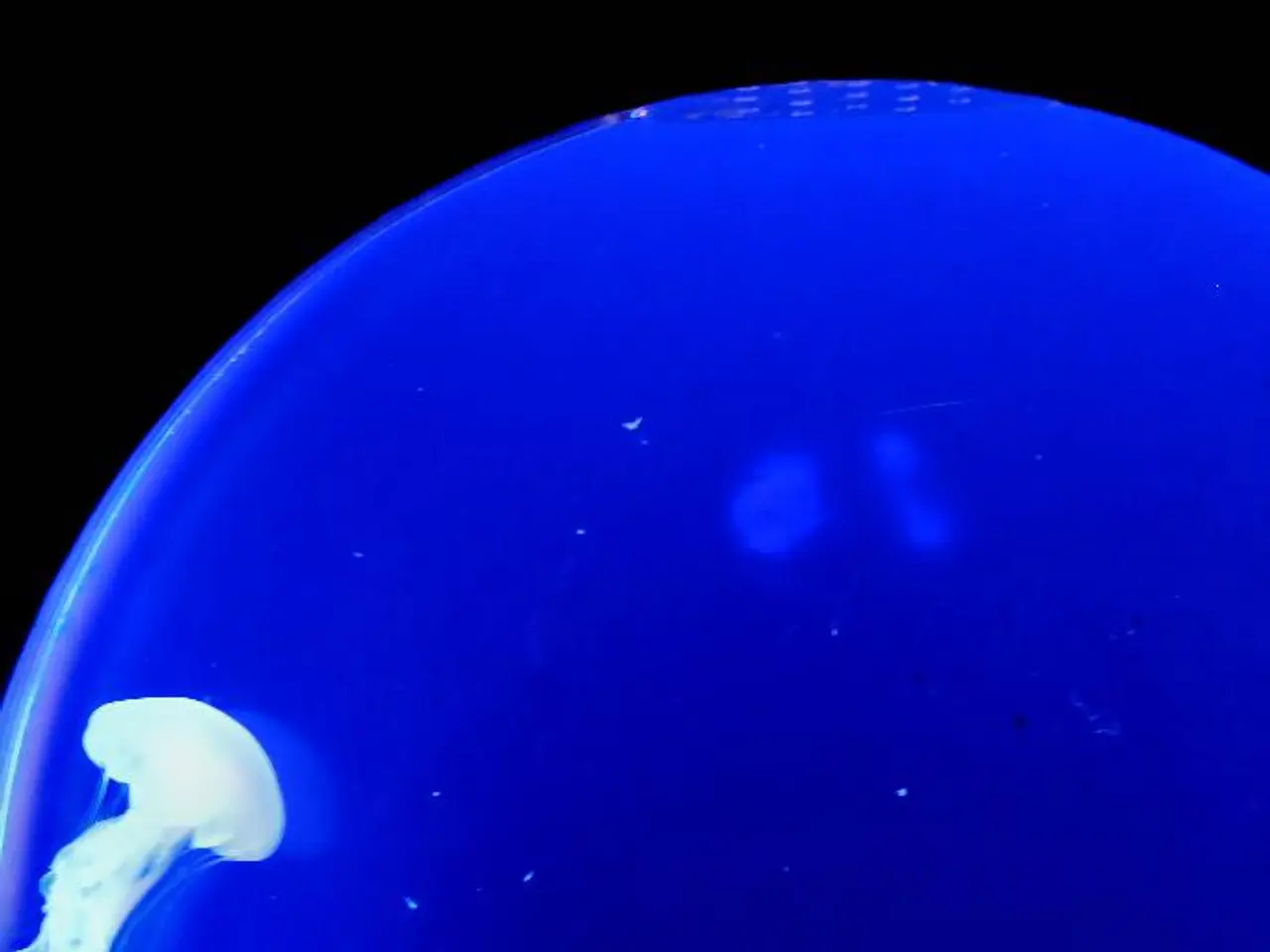Ancient marine origins of spiders revealed in newly discovered fossil
In a groundbreaking discovery, researchers have identified brain domains in the ancient marine arthropod Mollisonia symmetrica that correspond to living species of spiders and scorpions. This finding suggests that the common ancestor of arachnids had marine origins, and their distinctive brain architecture began evolving in ocean environments long before arachnids colonized land.
The fossil of Mollisonia symmetrica, which lived half a billion years ago during the Cambrian period, was analyzed by researchers. They found that the fossilized brain and nervous system of Mollisonia show striking similarities to the neural structure of modern spiders and related arachnids, rather than to horseshoe crabs, which were previously considered close relatives and strictly marine.
The unique feature in the fossilized nervous system of Mollisonia suggests that the creature's ancestors were marine or semi-aquatic, contrary to previous beliefs. The front part of Mollisonia's body has radiating segmental ganglia that control the movements of 5 pairs of segmented appendages, similar to spiders and present-day arachnids. Mollisonia also has an unsegmented brain that extends short nerves to a pair of pincer-like "claws", resembling the fangs of spiders.
This ocean origin hypothesis revises the evolutionary timeline, pushing back arachnid evolution to the Cambrian seas (540–485 million years ago), predating known terrestrial arachnid fossils by tens of millions of years. The advanced brain structure found in Mollisonia implies early complex movement and sensory control, which may have aided their later adaptation to terrestrial environments and predation on early land arthropods like insects and millipedes.
The discovery challenges the prior assumption that arachnids evolved solely as land animals. Instead, it indicates that important arachnid features developed while they were still marine organisms. The arachnid brain is unlike any other brain on this planet and may have something to do with computational speed and the control of motor actions.
Being able to fly gives insects a significant advantage when pursued by spiders, yet they are still caught in their millions in spiders' webs. This new understanding of the spider's evolutionary history sheds light on the ancient arms race between predator and prey that has shaped the evolution of life on Earth for hundreds of millions of years.
References:
[1] Edwards, D. B., & Selden, P. A. (2017). The Cambrian Explosion. Annual Review of Earth and Planetary Sciences, 45, 307–334.
[2] Dunlop, J. A., & Edgecombe, G. D. (2017). The evolution of the arthropod body plan. Nature Reviews Genetics, 18(11), 673–688.
[3] Briggs, D. E. G., & Collins, A. G. (2005). The origin and early evolution of arachnids. In The Arachnids (pp. 3–25). Elsevier.
[4] Edgecombe, G. D., & Selden, P. A. (2014). The Cambrian explosion: a perspective on the early evolution of the arthropods. Journal of Experimental Zoology Part A: Ecological and Integrative Physiology, 321(1), 1–14.
The discovery of Mollisonia symmetrica's brain domains indicates a potential connection between marine arthropods and spiders, suggesting that the study of marine-related conditions in environmental science might shed light on the origins of medical-conditions related to spiders and scorpions. Moreover, the complex movement and sensory control systems identified in this ancient marine arthropod could have implications for health-and-wellness research in space-and-astronomy, as understanding the evolution of such systems could help us better comprehend the physiological demands and adaptability required for life in non-terrestrial environments.




